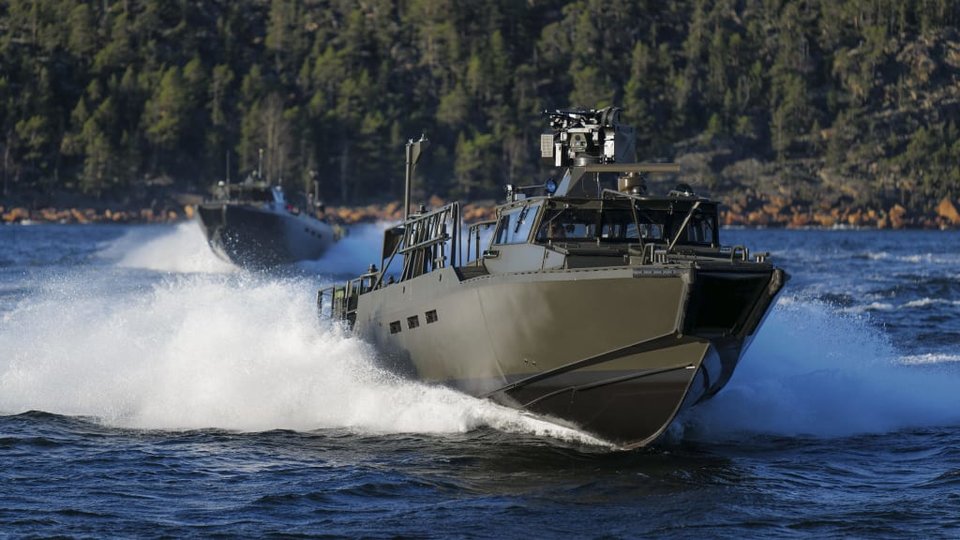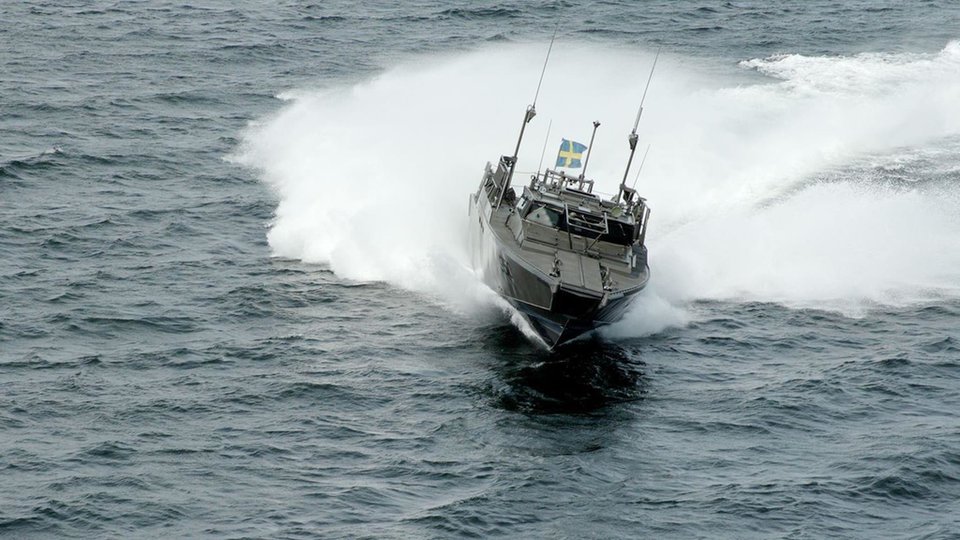Ships
On board CB90: Saab’s next-generation military assault craft
Saab demonstrated its upgraded Combat Boat 90 for the first time outside of Sweden at last month’s DSEI in London. Norbert Neumann takes a tour of the assault vessel and talks to Saab and the Swedish Ministry of Defence about its capabilities and advancements.
Saab Docksta shipyard has been producing combat vessels for 30 years, and the initial version of Combat Boat 90 (CB90) is in operation in Sweden, Norway, Mexico and Greece, and in South-East Asia by the US Coast Guard. The broad user base has allowed Saab to amass enough experience to design and build CB90 Next Generation, an improved and better-equipped version of its predecessor.
Saab offered a tour of the vessel at last month's DSEI in London, following a dramatic demonstration of its speed and agility on the Thames.
New missions, new boat
Leading the tour, Saab Docksta business unit head Andres Hellmann says the success of the CB90 lies in its versatility.
“We see the combat boat as a very unique product. It can do standard beaching, command and control, medivac, dive applications, reconnaissance and escorting,” he says.
The Swedish Armed Forces currently operate 147 CB90s, and the CB90HSM Next Generation, a custom-made version specifically for the Swedish Navy, is the latest addition to the combat boat family.
The exterior of the vessel has changed little in the new model but Gustav Kjellberg from the Swedish Ministry of Defence material administration stresses the importance to recognise that the CB90 Next Generation is a completely new boat.
We are also looking into the possibility of using a missile system to gain anti-surface or anti-aircraft capabilities
“The boat initially had some support firearms to protect it, but it was mainly designed to transport troops. However, we deemed that the way of fighting with the battalion is different now, and to avoid losing the transportation capabilities we needed to redesign the boat,” Kjellberg says.
Walking through the deck the potential firepower of the boat becomes apparent. The aft deck has three weapon mounts, whereas the mid-deck has two with the remotely-controlled Trackfire RWS system towering atop. The mounts can accommodate heavy machine guns, general-purpose machine guns or a Mark 19 grenade launcher.
Kjellberg explains while pointing at the main weaponry: “This model is equipped with a [Browning 50 calibre] 12.7mm machine gun and a 7.62mm machine gun but we have some ideas for this weapon station for the future. We are discussing the potential implementation of Bushmaster cannons, but we are also looking into the possibility of using a missile system to gain anti-surface or anti-aircraft capabilities.”
All the gun mount positions are optimised to cover the entire area surrounding the vessel, with easy-access ammunition boxes right behind the shooters for faster reloading.
But not just the lethality of the boat has received an upgrade. “We redesigned the entire wheelhouse so that it’s a more modern workplace. We are also using the navigation system in a different way. We have better ways of communicating from the boat and we have boosted the engine’s horsepower as well as its top speed,” Kjellberg says.
Saab also accommodates specific customer request for engines and other equipment.

// Swedish Armed Forces currently operate 147 CB90s. Credit: Saab.
Inside the cabin
The transport area provides support good visibility and is capable of carrying 18 troops plus three crew members. Saab Docksta business unit technical director Andreas Norsdtrand explains: “We are using bright colours and LED light to create good light conditions.”
The middle of the cabin is occupied by a large box that can be used to store equipment. The station for the stabilised independent line of sight (SILO) Trackfire is positioned at the back of the boat just a step from the entrance.
Nordstrand says: “This is the ideal position because you are out of the way but still facing forward. We want to keep the working environment [for the operator] as neat as possible.”
The Trackfire remotely-controlled weapon can lock on and follow its targets using laser guidance.
Saab’s engineer and product specialist Gustav Heurlin explains: “The picture you see on the operator console is fixed and the weapon is fully stabilised by using gyros regardless of the boats’ position, achieving a high hit-percentage even at high speeds or sudden turns.
“SILO means the sensor will always look at the target and the weapon system will calculate the ballistics.”
Racing over the high seas
Ergonomic improvements were also made to the CB90 to enable speeds of at least 40 knots, depending on engine selection, while providing maximum control for the captain and comfort for the soldiers.

// CB90 can achieve speeds of 40 knots. Credit: Saab
Nordstrand says: “To make this boat behave the way it does in the high-seas is really all about how you engineer it. The design of the hull, the complete drive-line and central gravity are all very important. We have a lot of experience with this design, so we can make it behave like a race car.”
The agility and high-manoeuvrability of the CB90 were inspired by the Stockholm archipelago’s narrow channels and shallow waters surrounding the cluster of some 30,000 islands. The all-aluminium built, slick boat with its lightweight polyethene lining supports the speedboat vision.
Lighter materials would also mean more susceptibility to damage, but Kjellberg is confident that isn’t an issue. “This boat is equipped with ballistic protection, but we believe that some part of the protection comes with the ability to manoeuvre at relative highs speed. It has been designed to fight in very difficult battle environments,” he says.
Saab has so far delivered 18 boats to Sweden and the handing over process has begun, but some additional training courses are still required before personnel can operate the CB90.
// Main image: Saab demonstrated its upgraded CB90 assault craft on the Thames as part of this year’s DSEI. Credit: Saab